#indochina war
Text

#california#vintage#i love you#vintage denim#just women#vintageshirt#los angeles#denim#vintagesweats#vintagesweatshirt#indochina war#indochina
6 notes
·
View notes
Text
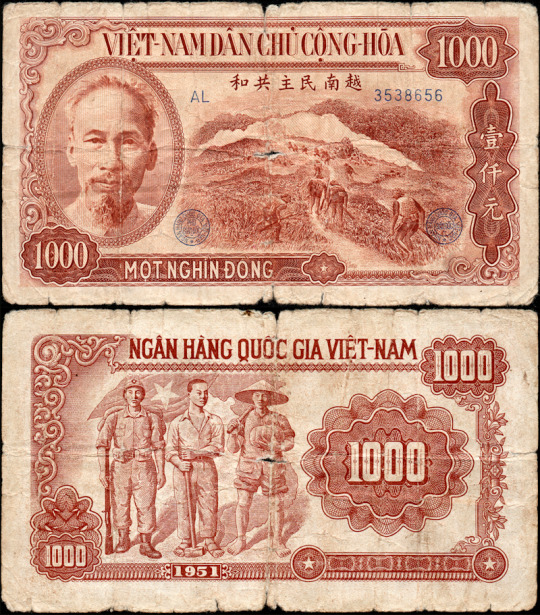
North Vietnam, 1000 Dong of 1951 depicting Ho Chi Minh and soldiers advancing across a hilltop. The back depicts a soldier, a labourer, and a farmer.
9 notes
·
View notes
Video
Indochina war, AU-1 Corsair by Linh Yoshimura
Via Flickr:
1954: French naval Aviation’s Vought AU-1 Corsair's on the aircraft carrier ‘Bois Belleau’ during Indochina war. Undated Photo
10 notes
·
View notes
Photo





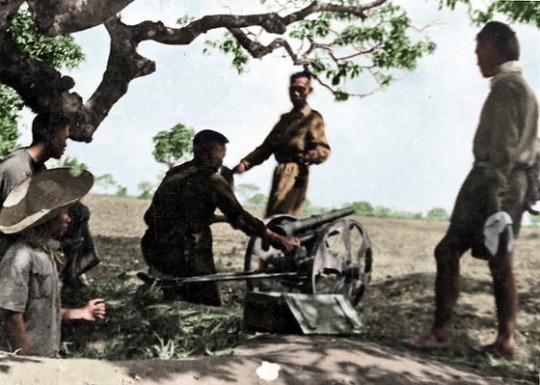



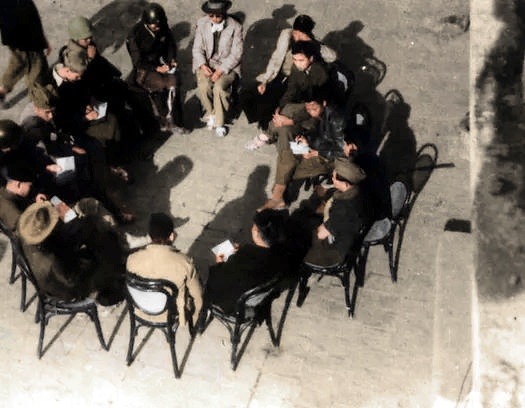
Hanoi - 60 days and nights to die / Hà Nội 60 ngày đêm quyết tử
Colourized photos from the Viet Minh & People’s Army of Vietnam defense of Hanoi against the Corps Expéditionnaire Français from 19 December 1946 – 18 February 1947. The captions are translated from Vietnamese and I did not write the original content.
1) Soldiers of the National Guard fighting in the streets of Hanoi. The graffiti on the wall reads: “En avant brave soldats Vietnamiens.” Source.
2) The 75mm artillery battery of the Capital Artillery Company at the Hanoi front in December 1946. The equipment of this battery is the cannon pedestal which was separated from the French Mle 1913 anti-aircraft vehicle (using the barrel of the 75mm Mle 1897 field cannon mounted on the De Dion-Bouton truck) obtained from captured French supplies after the August Revolution in 1945.
Photographer: Nguyen Ba Kien. Source.
3) The machine-gun group of the Viet Quoc Doan at the Battle of Hang Chieu. Source.
4) Self-Defense Forces outside Hanoi fight to protect the capital. Note how few have rifles or firearms. Source.
5) Two soldiers of the National Guard fighting on the front lines in Hanoi, December 1946. They are using 8mm Lebel Mle 1886/93 rifles, one of which has a 46mm Viven-Bessières grenade launcher. The writing on the wall reads “Vive la Paix Mondiale!”
Author: Nguyen Ba Khoan. Source.
6) A 37mm cannon of soldiers defending Hanoi preparing to fire at the French position on Yen Phu dike, January 1947. Source.
7) Anti-vehicle barriers in Bach Mai area, Hanoi in December 1946.
Author: Nguyen Ba Khoan. Source.
8) Improvised barricades made up of chairs, desks, and other furniture, manned by National Guard soldiers, on Hang Bai Street, Hanoi, late February 1947. Source.
9) A somewhat staged looking photo of a self-defense unit crawling onto a roof during the Battle of Hanoi. Source.
10) The Commanding Committee of the Capital Regiment meet to discuss the plan to withdraw troops from Hanoi, on January 13, 1947. Source.
#battle of hanoi#hanoi#bataille de hanoï#Trận Hà Nội 1946#urban warfare#guerrilla warfare#urban guerrilla#guerre d'indochine#indochina war#viet minh#people's army of vietnam#french colonial empire#vietnamese liberation movement#vietnamese communism#people's war#anti-french resistance war
8 notes
·
View notes
Photo

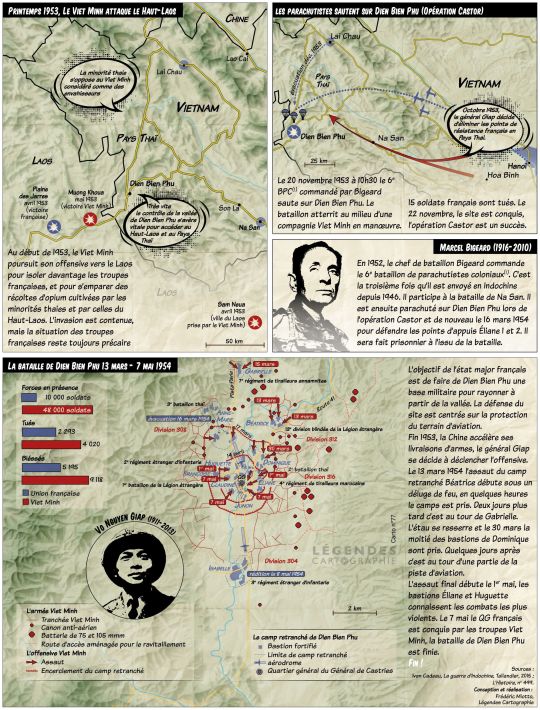
The Battle of Dien Bien Phu, March 13-May 7, 1954.
The Indochina War has raged since 1946, pitting French colonial forces against the Viet Minh separatists. To counter the latter's advances in northern Vietnam, the French army set up a base in the heart of enemy territory, in Diên Bien Phu. This strategy turned into a trap: the troops of General Vo Nguyen Giap (1911-2013) launched the assault on March 13, 1954 and conquered the camp in three operations, until its fall in May. Two months later, on July 20, the conflict ended with the signing of the Geneva Accords.
by LegendesCarto
70 notes
·
View notes
Text

Female warrior monks of the Hòa Hảo sect, Vietnam, 1946
93 notes
·
View notes
Text
Xiong was born in 1973 in Phab Kheb, Laos, one of 11 children in a family that fled the country in 1975 and spent four years in a refugee camp in Thailand before emigrating to the United States, according to Sahan Journal. He grew up in St. Paul and was valedictorian of his class at Humboldt High School in 1992.
Xiong graduated with a political science degree from Carleton College in Northfield in 1996 and began traveling around the country as a motivational speaker, storyteller and rap artist, billing himself as the country's first Hmong comedian.
Xiong helped organize the first Hmong Minnesota Day at the Minnesota State Fair in 2015, and was named a Bush Fellow in 2019 to earn a master's degree in public affairs.
With Xiong's death, the Hmong American community in the Twin Cities has lost a true leader, "consummate organizer and cultural interpreter," said longtime friend Pakou Hang. In his presentations and writings, she said, Xiong was a teacher who tried to show people how to be kind, generous and do the right thing.
Xiong connected people across generational, cultural and political lines who traveled the United States to speak at schools, colleges and businesses, Hang said. As a friend, he could inspire laughter in every conversation, she said.
[Rest of article under cut.]
A highly regarded Hmong American activist, speaker and comedian from the Twin Cities was found dead Monday in Medellín, Colombia, after kidnappers demanded $2,000 in ransom from his family.
Tou Ger Xiong, 50, was killed while on a vacation to Medellín. His brother, Eh Xiong, confirmed his death Tuesday morning on Facebook.
"The pain of his loss is indescribable. We extend our deepest gratitude to all who have offered their condolences, thoughts, and prayers," Xiong's family wrote in the Facebook statement.
Xiong, who lived in Woodbury, was kidnapped Sunday after a date with a woman he met on social media, according to the Colombian newspaper El Colombiano.
A group of men contacted his family demanding $2,000 — the equivalent of $8 million in Colombian pesos — and killed him a day later without collecting the money.
Three American tourists, including Xiong, have been murdered in the last month, El Colombiano reported.
Kidnappings in Colombia are on the rise, according to authorities. In the first few months of 2022, 35 people were abducted in the country, and that figure is more than double this year for the same period.
Early last month, the father of a Colombian soccer star was freed after he was held for around a week by a guerrilla group.
[The excerpt above came from here.]
Former state Sen. Mee Moua of St. Paul, for whom Xiong worked as a volunteer coordinator in her successful 2002 campaign, said in a statement that she was "weighed down with grief for my friend," and called Xiong "a one-of-a-kind modern-day hero."
U.S. Rep. Betty McCollum, D-St. Paul wrote on X, formerly known as Twitter, that Xiong's death was "devastating news" and that his work as a comedian and activist "touched many lives in the Twin Cities and beyond."
Hang said Xiong would perform skits based on his own stories growing up as a refugee and other lessons from the larger Hmong community. She recalled him bringing older Hmong women onto the stage to demonstrate how they would pick corn or fetch water as children, setting it to music and transforming it into a dance.
Xiong sought to connect first-generation Hmong American kids with classmates of other races, and strengthened intergenerational relationships with their families by making them proud to be Hmong, she said.
Xiong and Hang worked together on many community causes, including the formation of the Coalition for Community Relations, a group that traveled to rural Wisconsin from the Twin Cities in 2004 to "bear witness" at the trial of Chai Soua Vang, a Hmong American man eventually convicted for killing six hunters.
"We're not here to defend Chai," Xiong told the Star Tribune at the time. "We're coming together to accentuate the positives in the Hmong community."
Xiong also brought media attention to a hunger strike in Northern California in 2021 after a Hmong cannabis farmer was killed by police, Hang said. He flew to California to lead a march and gather stories. Discriminatory ordinances passed by Siskiyou County were later ruled unlawful.
"We don't have anyone else in the community like that," Hang said.
#asian americans#hmong#the hmong don't get talked about much on here#but many were displaced during the wars in indochina#and came to the us as refugees where they face racism#really sad to see an activist get killed violently
46 notes
·
View notes
Text
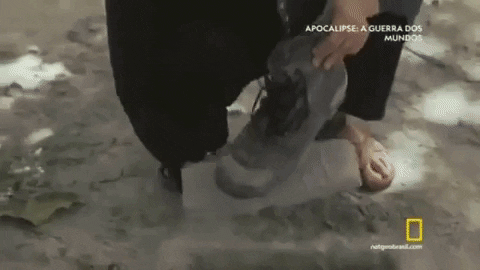

#cold war#50's#60s#indochina#Cochinchina#vietnam#north vietnam#soldiers#soldier#documentary#my gif#gifs#my edit#Indochina Wars#Indochina War in France#the French War in Vietnam#hanoid#saigon
12 notes
·
View notes
Text
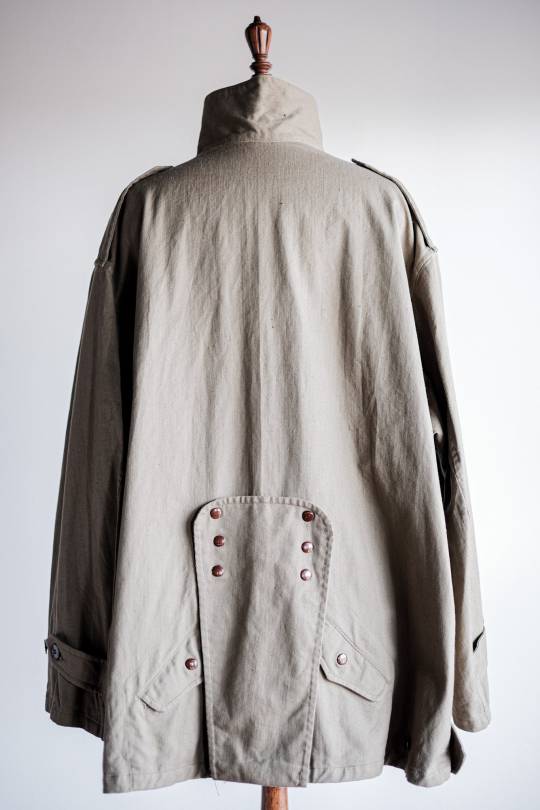
#california#vintage#i love you#vintage denim#just women#vintageshirt#los angeles#denim#vintagesweats#vintagesweatshirt#indochina war#indochina
0 notes
Text
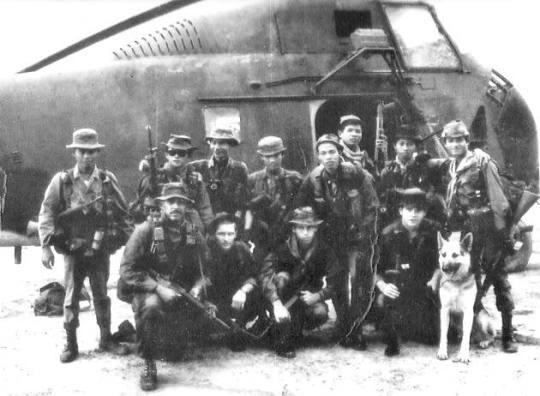
Spike Team Idaho: Last radio message. “Team Okay”
The men of ST Idaho, two Americans and four South Vietnamese indigenous troops, were tasked with locating enemy forces and activity in the A Shau Valley.
ST Idaho was comprised of One-Zero, or team leader, Glen Oliver Lane, One-One, or assistant team leader Robert Duval Owen, and four skilled South Vietnamese indigenous troops.
The highly experienced ST Idaho inserted on the morning hours of May 20, 1968. They sent the standard “Team Okay,” over the net. That was the last time anyone heard or saw them.
57 notes
·
View notes
Video
Indochina war, AU-1 Corsair by Linh Yoshimura
Via Flickr:
1954: A French naval aviation’s Vought AU-1 Corsair about to hook on the aircraft carrier ‘Bois Belleau,’ Indochina war. Undated Photo
7 notes
·
View notes
Photo

Tirs de nuit à Na San et “lucioles” éclairantes. Le PA mo. 9 tire sur le PA 24, enlevé par le Viêt-minh. Nuit du 30 novembre au 1er décembre 1952.
Photo par Raymond Cauchetier.
Marina Berthier, La bataille de Na San Indochine. ECPAD, Fonds Indochine. p. 19.
#na san#bataille de na san#guerre d'indochine#guerrilla warfare#night attack#night photography#flares#corps expéditionnaire français#counterinsurgency#indochina war#indochine française#french colonial empire#stronghold
3 notes
·
View notes
Text

Capitaine Jean Graziani, born in Algeria in the same town Albert Camus was born. Joined the US Army at the age of 16 in 1942 after allied forces landed in Algeria before being kicked out because of his age. Joined the French resistance, shipping him to Scotland to be trained as an SAS demolition specialist before being parachuted in occupied France to delay the German retreat of 1944, destroying bridges, railways and sabotaging a hundred phone lines. He will serve in the 3rd BCCP paratrooper regiment in Indochina, leading a commando unit behind enemy lines before being captured by the Viet Minh during an attempt to rescue an encircle column of the 1st Foreign Parachute Battalion. He will stay 4 years in a prisoner camp despite two escapes attempts, his last enabling hime to sail 60km along the Song Gain river on a makeshift raft. He would later be assigned to a counter-insurgency unit in Algeria where he will be killed on January 6, 1959 after being hit with submachine gun fire in the guts during an operation in Kabylie. He had enough time to give his watch to a good friend of him during his helicopter transfer. The journey of this shock troop officer pictures very well the journey of many French officers during the post WW2 colonial wars and their ambiguity. Often pulled from the ranks of the resistance to fight tyranny, they ressorted to the same techniques to maintain France's grasp on its colonial empire. Many of them ended in jail or as outcasts, torn and disabused by their experience of violence mixed with politics and the slow decay of their empire and youth ideals.
#french#soldier#capitaine#indochina#beautifuldestinations#colonial wars#history#war#paratrooper#special forces#algeria
35 notes
·
View notes
Text

ASSEMBLE THE PARTY MEMBERS -- VIETNAMESE LIBERATION IS NOW.
PIC INFO: Spotlight on a shot of Le Duan, general secretary of the Vietnamese Communist Party, with Ho Chi Minh at a rally in Hanoi, North Vietnam in 1966. 📸: Nihon Denpa.
OVERVIEW: "As any account of combat in the Vietnam War will tell you, America fought an “elusive enemy”: guerrillas who would strike and then disappear; battalion commanders who refused to engage in open battles. But there’s more to the cliché than most people realize. Even by 1967, America’s military, intelligence and civilian leaders had no real idea who was actually calling the shots in Hanoi.
To some extent, this is what the North wanted — the impression that decisions were made collectively, albeit under the gentle guiding hand of President Ho Chi Minh. But the American confusion also, inadvertently, reflected the messy, factionalized reality of North Vietnamese politics, one that historians are only now coming to grasp. Thanks to the slow if capricious process of historical declassification, the publications of renegade memoirs and histories, the dissemination of “open letters” by disgruntled former leaders, and the careful and painstaking research and analysis by Vietnam specialists, we now have a better understanding of who was on top in Hanoi and what battles he waged to get there.
During the war, American intelligence experts cycled through a long list of suspects. At one point or another, intelligence reports and analyses at the time named all 11 members of the top Communist leadership, the Political Bureau or Politburo (Bo Chinh Tri), as the true leader of the Vietnamese Workers’ Party.
The obvious choice, and the one portrayed as the North’s leader in the press, was Ho Chi Minh, a grandfatherly figure whose global travels and illustrious anticolonial career made him a world-renowned figure. Another popular candidate was Vo Nguyen Giap, the general credited with foiling superior French forces in spectacular fashion at Dien Bien Phu. Even Prime Minister Pham Van Dong, who represented the Democratic Republic of Vietnam at the Geneva talks in 1954, was put forward as the real mastermind behind Hanoi’s war.
In fact, it was none of these. The real leader was Le Van Nhuan, who later took the name Le Duan, a nondescript party official from humble origins in central Vietnam."
-- THE NEW YORK TIMES, "Who Called the Shots in Hanoi?," by Lien-Hang Nguyen, published February 14, 2017
Source: www.nytimes.com/2017/02/14/opinion/who-called-the-shots-in-hanoi.html.
#Le Van Nhuan#Le Duan#Ho Chi Minh#Vietnamese Liberation#North Vietnam#Hanoi#Vietnam#Political Rally#1966#Vietnamese Communist Party#Indochina#Vietnamese Leaders#60s#Uncle Ho#🇻🇳#Vietnam War#Photography#Communist#Sixties#Communism#Political figures#Vietnamese#1960s#Communist Vietnam
3 notes
·
View notes
Text

French Foreign Legionnaires assemble a M24 Chaffee light tank; ten tanks were broken down into 180 parts each, flown to Dien Bien Phu, then re-assembled on site. December 1953
44 notes
·
View notes